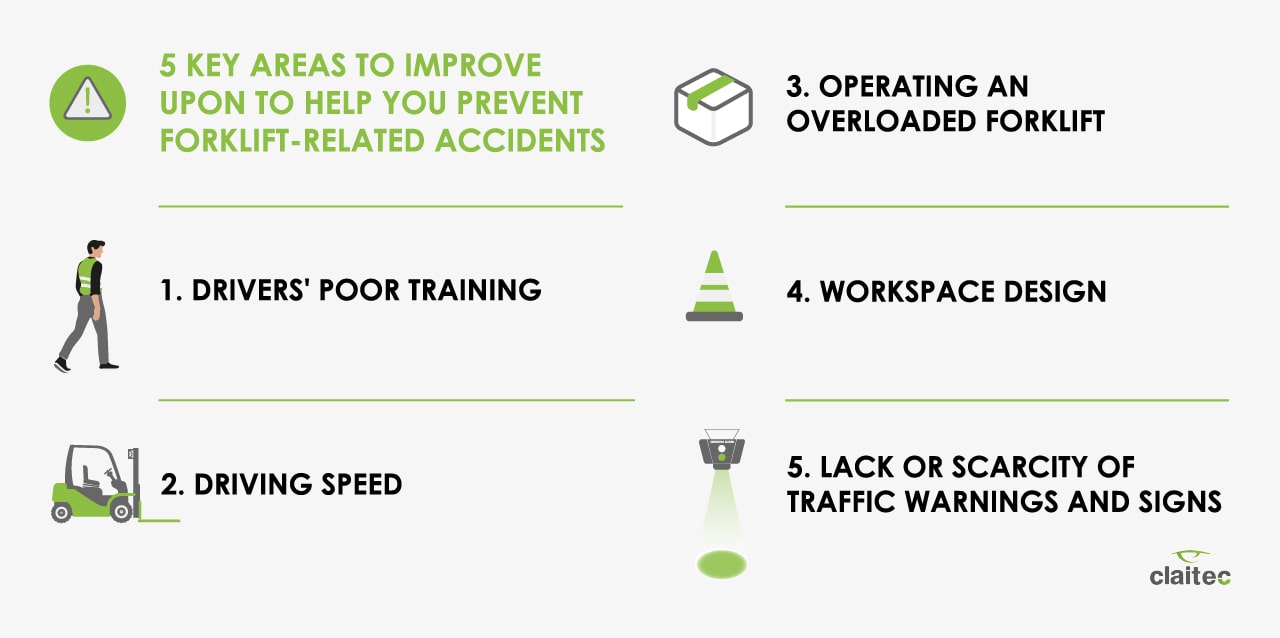
The link between forklifts and accidents at work and occupational safety concerns is widely known in the industrial sector. Claitec works tirelessly to address this situation and improve the way in which these vehicles interact with people in workspaces.
Our experience and our clients’ in this regard has proven that the following five aspects are key to preventing forklift-related accidents:
- Drivers’ poor training. We have been witness time and again to the lack of appropriate training in operators who must drive a forklift for hours on end. Investing in driver education and training should be a priority, as well as equipping them with a number of complementary tools that assist their task, such as the PAS Pedestrian Alert System, to mention an example. Investing in this type of safety tools will reduce accidents and achieve better results.
- Driving speed. The recommended driving speed is less than 5 miles per hour (about 8 km/h). Driving at higher speeds and irresponsibly robs the vehicle of its ability to react to unforeseen events and it increases the risk of accidents. The LSA Solution for low-speed areas is ideal to keep the driving speed under tabs.
- Operating an overloaded forklift. A very risky way of driving as it impacts both the driver’s visibility and the vehicle’s ability to control and respond, causing extremely risky accidents. Claitec’s high load sensor HLS is an extremely helpful tool designed to control the load and minimising risks while driving.
- Workspace design. Sharp curves, zero viewing angles, or narrow aisles are very common causes of workplace accidents. We often see forklifts overturning or crashing at dangerous intersections. Claitec’s BS Solution for blind spot areas minimises the risk of collision between forklifts and pedestrians while reducing collisions in areas of limited visibility.
- Lack or scarcity of traffic warnings and signs. A key factor to industrial safety is to clearly indicate forklift circulation areas, especially in those places where these vehicles coincide with operators on foot. However, the necessary signs are very often not placed in the appropriate places, or these are not reviewed and updated according to the different functions of the spaces. Industries can address this issue with solutions such as the Crossing Guard – to avoid collisions at intersections -, or the VAS System – which warns pedestrians and/or forklift drivers of risk situations – by projecting signs on the floor.
Should you need more information on how to improve your levels of occupational safety, please don’t hesitate to get in touch.

Sorry, the comment form is closed at this time.